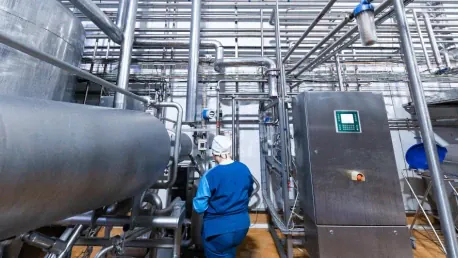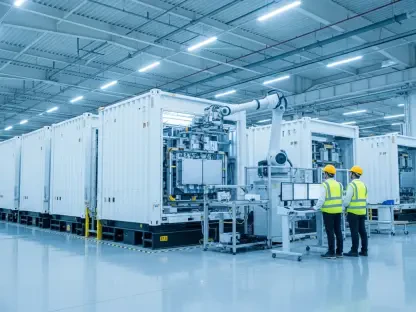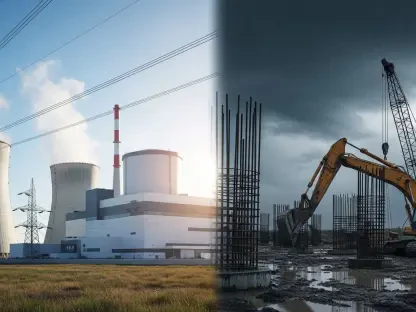The American dairy cattle industry has faced significant challenges over the past fifty years, with the number of farms reducing by nearly 90% since 1970. Milk pricing pressures and the rise of corporate farming have been primary contributors to this downturn. Despite thousands of dairy farms still in operation, their future remains uncertain as they continue to struggle with thin profit margins. However, a potentially transformative solution is emerging: the production of renewable natural gas (RNG) from cow manure.
The Promise of RNG
Environmental and Financial Benefits
RNG production from cow manure offers a dual benefit. Environmentally, it helps reduce methane emissions, a significant contributor to greenhouse gas emissions in the livestock industry. According to a 2022 Department of Agriculture report, the livestock industry accounts for nearly 10% of U.S. greenhouse gas emissions, predominantly methane from manure management and livestock digestion, and nitrous oxide from fertilizer application. Financially, RNG provides an additional revenue source for dairy farmers, potentially alleviating some of their economic pressures. The process captures methane from dairy waste before it is released into the atmosphere, converting it into RNG that can replace diesel. This not only helps meet decarbonization goals but also provides a new revenue source for farmers. The use of RNG offers a promising avenue for the American dairy cattle industry to generate new revenue streams and achieve decarbonization goals.
RNG production can directly help the agricultural sector turn a waste problem into a sustainable energy solution. The process involves capturing methane from decomposing organic matter, like cow manure, and transforming it into RNG that can be used as an alternative to conventional fossil fuels. This method significantly reduces the methane emissions that would otherwise contribute to environmental pollution. As dairy farmers adopt this technology, they can create an additional and sustainable income source by selling the RNG produced. This financial boost is particularly important for smaller farms struggling to survive in an increasingly competitive market.
Current State and Challenges
While RNG production from dairy farms is gaining traction, it is still a nascent sector requiring time and the right conditions to scale up. Currently, the majority of RNG is produced from waste-to-energy facilities built upon landfills or from wastewater systems. Expanding RNG production to include more dairy farms faces significant challenges, particularly regarding scale and location. Profitable RNG production sites require contributions from thousands of cows and proximity to natural gas pipelines. This means smaller farms, which are more common, might struggle to meet the required conditions without collaborative efforts or technological advancements.
Companies like LF Bioenergy are making strides in RNG production from dairy farms. However, the current technology costs make it difficult to establish RNG facilities on smaller farms. There is a need for incentives to encourage investment in American-produced RNG to extend these benefits to farms of all sizes. Even though the early phases of RNG adoption face hurdles, the promising results from pilot programs indicate that widespread implementation could lead to substantial benefits for the sector. The development of cost-effective technologies and government incentives will be crucial in overcoming these challenges and paving the way for broad-based adoption.
Scaling and Location
Technological and Logistical Considerations
RNG production involves converting manure into bio-digesters where it is cleaned and scrubbed to meet or exceed pipeline industry standards. For this conversion to be feasible, farms need to have a minimum number of cows (typically around 4,000) and be located within two miles of utility pipelines. Additionally, sufficient electricity is required to power both the farm and the RNG facility, necessitating collaboration with local utilities. This requirement places a significant barrier to entry for smaller farms, which might not have the necessary herd size or be located in the appropriate proximity to pipelines. Addressing these logistical challenges will be vital for scaling RNG production across more regions.
The private sector sees significant potential in RNG, both from a financial and emissions-reduction standpoint. Companies like Microsoft, the San Diego Metropolitan Transit System, the Port of Seattle, AstraZeneca, and Walmart have entered purchase agreements for RNG sourced from landfills and dairy farms. The American Biogas Council reported that RNG production contributed $7.2 billion to the U.S. GDP in 2024, with over 400 facilities operational nationwide and more under construction or planned. The involvement of large corporations underscores the commercial viability and environmental benefits of RNG. Their commitments signal confidence in the technology and its potential to become a significant player in the energy market.
Progress in the U.S. and Europe
Biogas and RNG production in farming is more advanced in Europe compared to the U.S. Nevertheless, the U.S. dairy industry has set ambitious goals to achieve net zero emissions by 2050. Since launching this initiative in 2020, close to $50 million has been invested in decarbonization projects across approximately 350 farms in the country. The progress made by European farmers offers a blueprint for American dairy operations to replicate and build upon. European advancements show that this technology can be implemented successfully, paving the way for U.S. farmers to adopt and benefit from similar practices.
The combination of innovation, investment, and the resilient spirit of dairy farmers suggests that RNG could play an increasingly important role in meeting energy and environmental goals. As technological advances reduce costs and increase efficiency, the uptake of RNG technology could become quicker and more widespread. The American dairy industry’s commitment to sustainability, supported by public and private sector investments, sets a promising foundation for future growth in RNG production. The lessons learned from both American and European experiences will help shape the pathway towards a more sustainable and profitable dairy industry.
Future Prospects
Incentives and Investments
To make RNG production a viable option for more dairy farms, there is a need for incentives to encourage investment in American-produced RNG. This could extend the benefits of RNG production to farms of all sizes, not just the larger ones. The current technology costs make it difficult to establish RNG facilities on smaller farms, but with the right incentives, this could change. Government subsidies, tax breaks, and grants could all contribute to making RNG technology more accessible. The support mechanism would lower the financial burden on smaller farms, allowing them to participate in RNG production and benefit from its revenue potential.
Despite its current fractional contribution to the global energy mix, RNG holds significant promise for the future. The combination of innovation, investment, and the resilient spirit of dairy farmers suggests that RNG could play an increasingly important role in meeting energy and environmental goals. The private sector’s interest in RNG, both from a financial and emissions-reduction standpoint, further underscores its potential. The alignment of environmental and economic benefits makes RNG an attractive proposition for investors, farmers, and policymakers alike.
Looking Forward
The American dairy cattle industry has experienced significant challenges over the past half-century. Since 1970, the number of dairy farms has plummeted by nearly 90%. This drastic decline is largely due to milk pricing pressures and the rise of corporate farming, which have made it difficult for smaller, family-owned farms to survive. Although thousands of dairy farms are still operating, their future is uncertain as they grapple with razor-thin profit margins. However, an innovative solution is on the horizon: the production of renewable natural gas (RNG) from cow manure. RNG production not only provides an alternative revenue stream for struggling dairy farmers but also addresses environmental concerns. Cow manure, when processed correctly, can be converted into a clean energy source. This method reduces greenhouse gas emissions and creates a renewable energy resource. By adopting this technology, dairy farms can enhance their financial stability while contributing to environmental sustainability, offering a promising future for an industry in decline.









